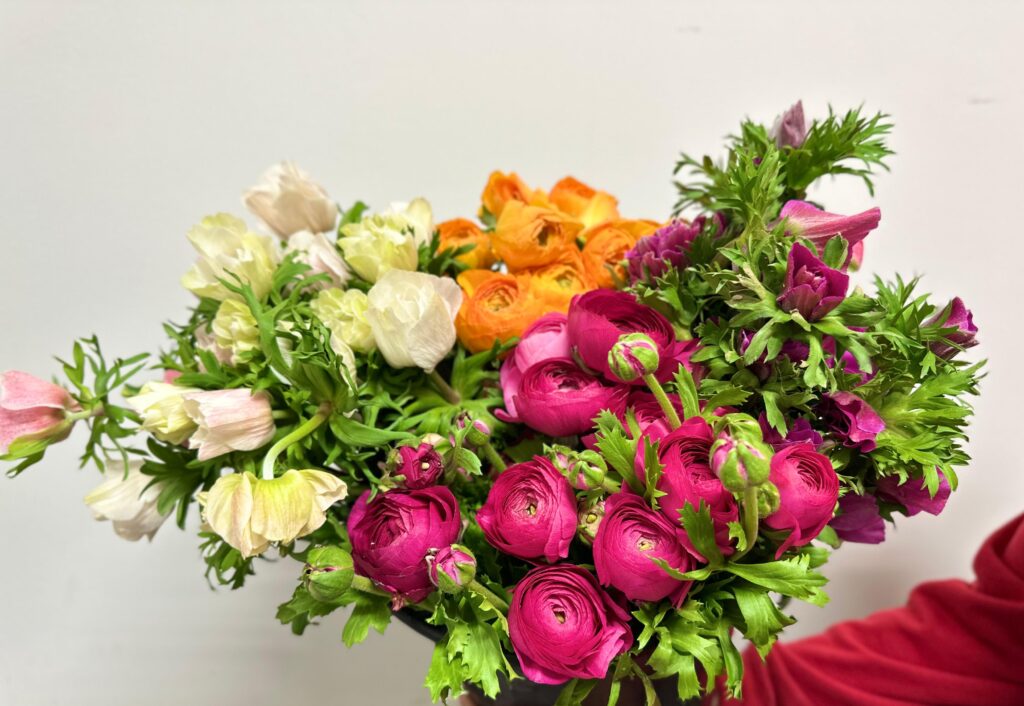
Working as a florist can be a rewarding experience, but it certainly brings along with it several difficulties. It is an extremely diversified sector, consisting of hundreds of types of plants grown, subject to continuous innovation and following the changing taste of the consumer.
For some years now, the production of the Riviera dei Fiori has been influenced by unusual weather patterns, which have favoured the arrival of new diseases. It is the duty and responsibility of the floriculturist to monitor and supervise crops right from the early stages of planting; to possess good diagnostic skills in order to identify the alteration agents in time, keeping all the information collected during the monitoring and constantly updating in order to correctly use any means of defense.
These practices, combined with targeted nutrition, enable high commercial value production in order to satisfy the widest range of consumers.
Ranunculus, like Anemones, require soil that is rich in nutrients, tending towards acid and well drained; water stagnation is highly feared.
Ranunculus flowers need a lot of light, even better if combined with a not excessively high temperature, especially at night, when the flowers close.
The supply of fertilizers, in the first phase of the plant’s growth, the vegetative one, favours fertilizers rich in nitrogen, to then move on to a more unbalanced supply in favour of potassium in the production phase.
To ensure proper biological control and environmental sustainability, we use the integrated pest management method, which consists of the launch of predatory insects, organic products and a rational and sustainable use of synthetic molecules.
During the season the stems should be collected continuously, early in the morning to ensure the best quality and a perfect opening point of the flower itself.
To learn more you can come and visit us or visit our Instagram page!




